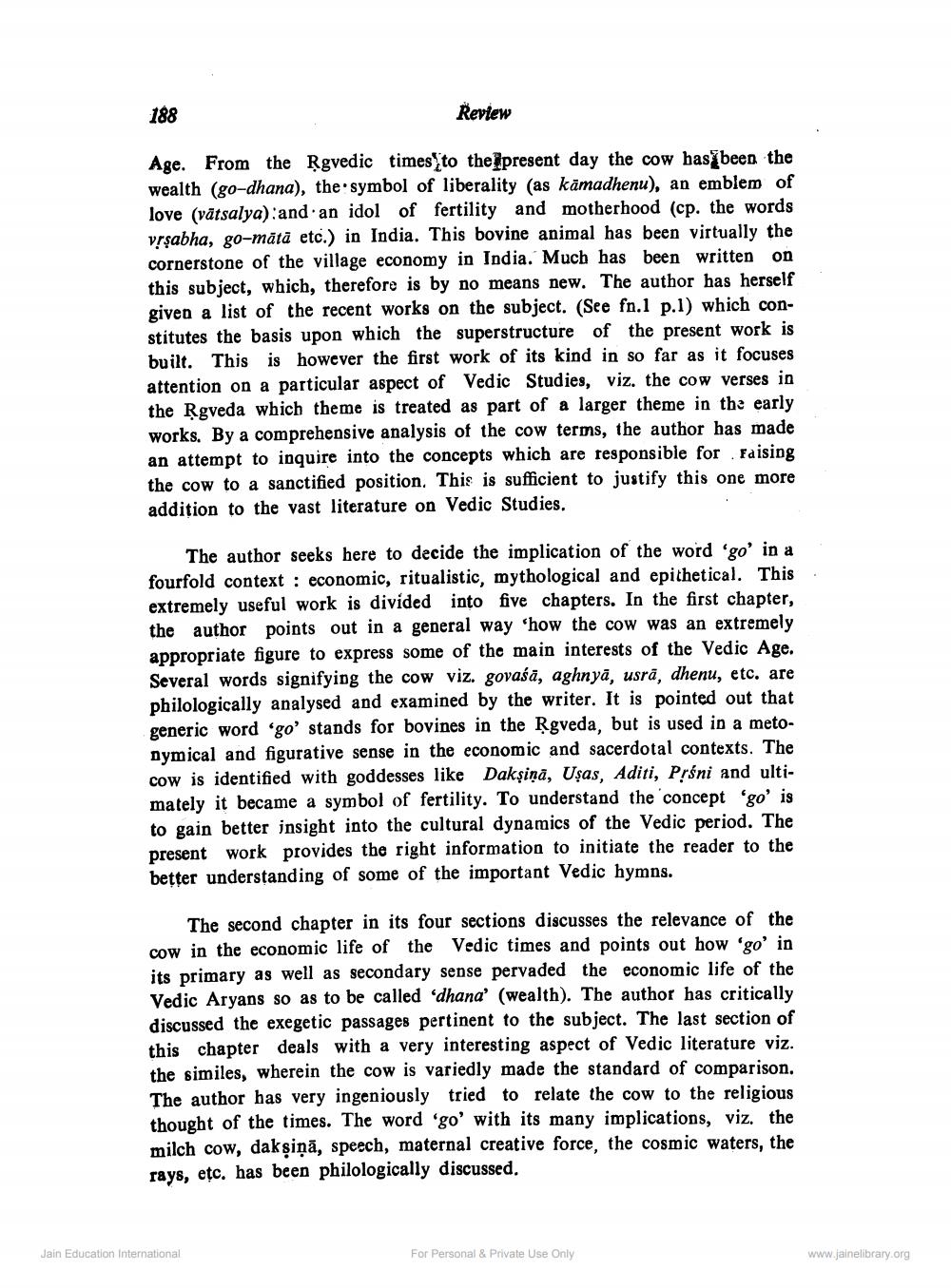________________
188
Review
Age. From the Rgvedic times to the present day the cow has been the wealth (go-dhana), the symbol of liberality (as kāmadhenu), an emblem of love (vätsalya) and an idol of fertility and motherhood (cp. the words vrşabha, go-mātā etc.) in India. This bovine animal has been virtually the cornerstone of the village economy in India. Much has been written on this subject, which, therefore is by no means new. The author has herself given a list of the recent works on the subject. (See fn.1 p.1) which constitutes the basis upon which the superstructure of the present work is built. This is however the first work of its kind in so far as it focuses attention on a particular aspect of Vedic Studies, viz. the cow verses in the Rgveda which theme is treated as part of a larger theme in the early works. By a comprehensive analysis of the cow terms, the author has made an attempt to inquire into the concepts which are responsible for raising the cow to a sanctified position. This is sufficient to justify this one more addition to the vast literature on Vedic Studies.
The author seeks here to decide the implication of the word 'go' in a fourfold context : economic, ritualistic, mythological and epithetical. This extremely useful work is divided into five chapters. In the first chapter, the author points out in a general way how the cow was an extremely appropriate figure to express some of the main interests of the Vedic Age. Several words signifying the cow viz. govaśā, aghnyā, usrā, dhenu, etc. are philologically analysed and examined by the writer. It is pointed out that generic word 'go' stands for bovines in the Rgveda, but is used in a metoDymical and figurative sense in the economic and sacerdotal contexts. The cow is identified with goddesses like Dakşiņā, Uşas, Aditi, Prśni and ultimately it became a symbol of fertility. To understand the concept 'go' is to gain better insight into the cultural dynamics of the Vedic period. The present work provides the right information to initiate the reader to the better understanding of some of the important Vedic hymns.
The second chapter in its four sections discusses the relevance of the cow in the economic life of the Vedic times and points out how 'go' in its primary as well as secondary sense pervaded the economic life of the Vedic Aryans so as to be called 'dhana' (wealth). The author has critically discussed the exegetic passages pertinent to the subject. The last section of this chapter deals with a very interesting aspect of Vedic literature viz. the similes, wherein the cow is variedly made the standard of comparison. The author has very ingeniously tried to relate the cow to the religious thought of the times. The word 'go' with its many implications, viz. the milch cow, dakšiņā, speech, maternal creative force, the cosmic waters, the rays, etc. has been philologically discussed.
Jain Education International
For Personal & Private Use Only
www.jainelibrary.org




